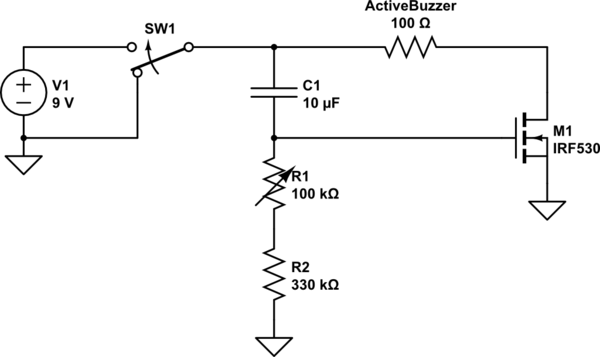I'm trying to get a latch switch to send a pulse for around 3 seconds or so. The pulse doesn't need to be pretty or precise. The circuit will be used to sound a buzzer when the switch is flipped on. It shouldn't sound when the switch is released, as supposedly no current will be flowing from a 9V battery I'm strapping to it.
I know you can kind of accomplish something like this with a Schmitt trigger gate, maybe. It's been over 5 years since my electrical engineering course and I'm a bit stumped. I'd use a 555 IC if that'd work with a latch switch, but I'm not sure how to get that to work as I think it requires a momentary pulse from a button or something.
Here is a criminally bad diagram shows what I'm trying to do.
Any help is greatly appreciated.



